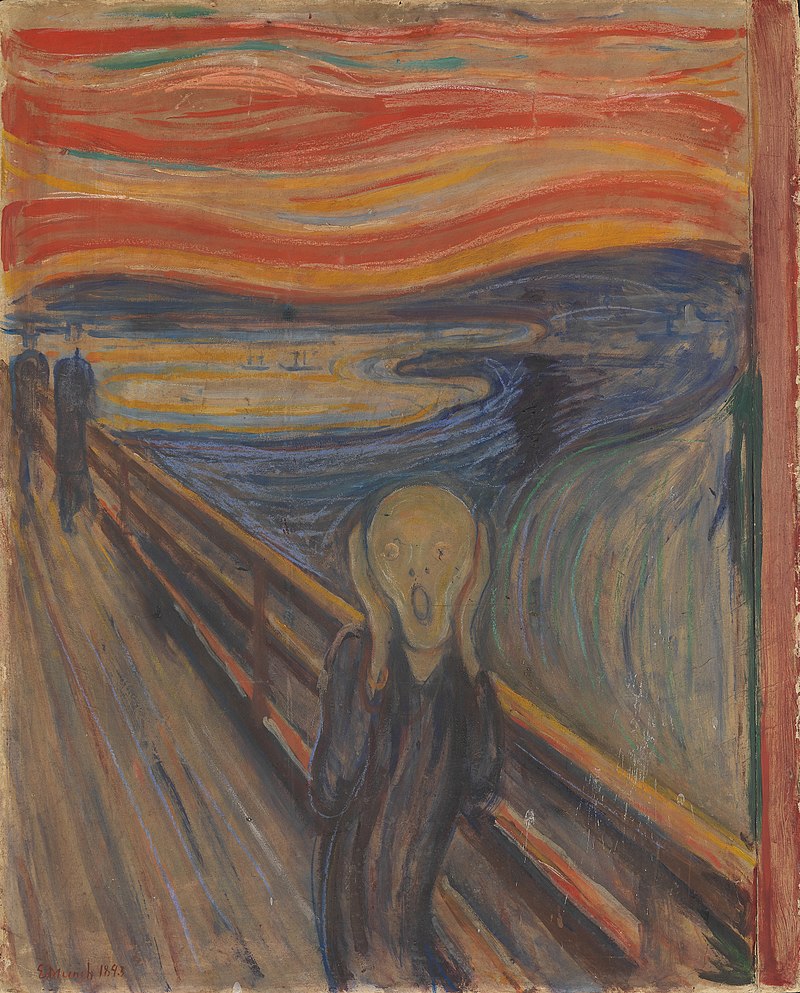any work of art showing a person, several people or an animal.
It usually emphasizes just the face but can include part or all of the body.
Portrait
a principle of design. The arrangement of elements in a work of art (including size and number of objects) that achieves a sense of equality.
Balance
Stiff, sticky kind of earth that is used in ceramics. It is wet, and it hardens after drying or heating.
Clay
is a kind of paint intended to be applied with the fingers
Finger-painting
the part of the artwork that lies between the foreground and the background.
Middle-Ground
a drawing or painting of an arrangement of non-moving, non-living object such as fruit, flowers, bottles, etc. The arrangement is usually set indoors and includes at least or manufactured object, such as a bowl or vase.
Still Life
the size, location or amount of something as compared to something else; the relationship of the parts to the whole.
Proportion
It is popularly used by artists as a painting surface, typically stretched across a wooden frame.
Canvas
a simple, quick, rough drawing done without a lot of detail but catching the chief features and a general impression of an object or scene.
Sketch or Sketching
the art of writing letters and words in an ornamental style using brushes or pens.
Calligraphy
the true appearance of people, objects or scenes as seen by the human eye.
It attempts to re-create the colors, textures, shapes and arrangement of actual objects.
Realism or realistic
the use of sizes, shapes, colors, textures and other elements and principles of design to draw attention to certain areas or objects in a work of art.
Emphasis
is a pen which has its own ink source and a tip made of porous, pressed fibers such as felt.
Markers
This may sometimes include magazine and newspaper clippings, ribbons, paint, bits of colored or handmade papers, portions of other artwork or texts, photographs and other found objects, glued to a piece of paper or canvas.
Collage
a line that shows or creates the outer edges of a shape of form, also sometimes called the contour.
Outline
work of art formed from a combination of more than one medium, often in an unusual combination of unrelated materials such as wood, clay, paint and fabric.
Mixed Media
the arrangement of the parts of a design to create a sense of motion by using lines that cause the eye to move over the work. Also,-a tendency or trend by artists during a period to use certain techniques or methods.
Movement
the activity or occupation of making pictures or designs by printing them from specially prepared plates or blocks.
Printmaking
a painting technique in which layers of wet paint are applied to previously administered layers of wet paint.
Wet-on-wet
Artist who is known for cutting off his ear
Vincent Van Gogh
a style of art in which shapes, designs, textures and colors are represented in a way that may look unrealistic, but that emphasizes moods or feelings.
Is characterized by the use of geometric lines and shapes and bright, bold colors.
Abstract
a large difference between two things; for example, warm and cool, yellow and purple, light and shadow. Contrasting values, colors and textures add excitement, emphasis and interest to a work of art.
Contrast
Black crumbly drawing material made of carbon and often used for sketching and under-drawing for paintings
Charcoal
is a technique of painting in which small, distinct dots of color are applied in patterns to form an image.
Pointillism

What is the name of this painting?
The Scream